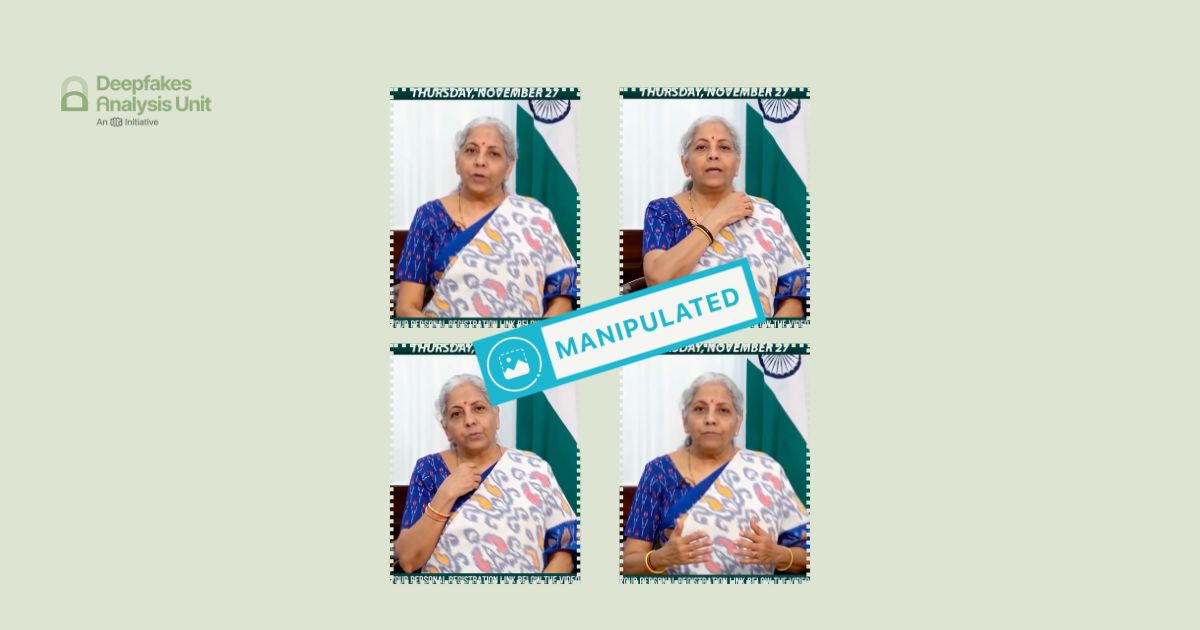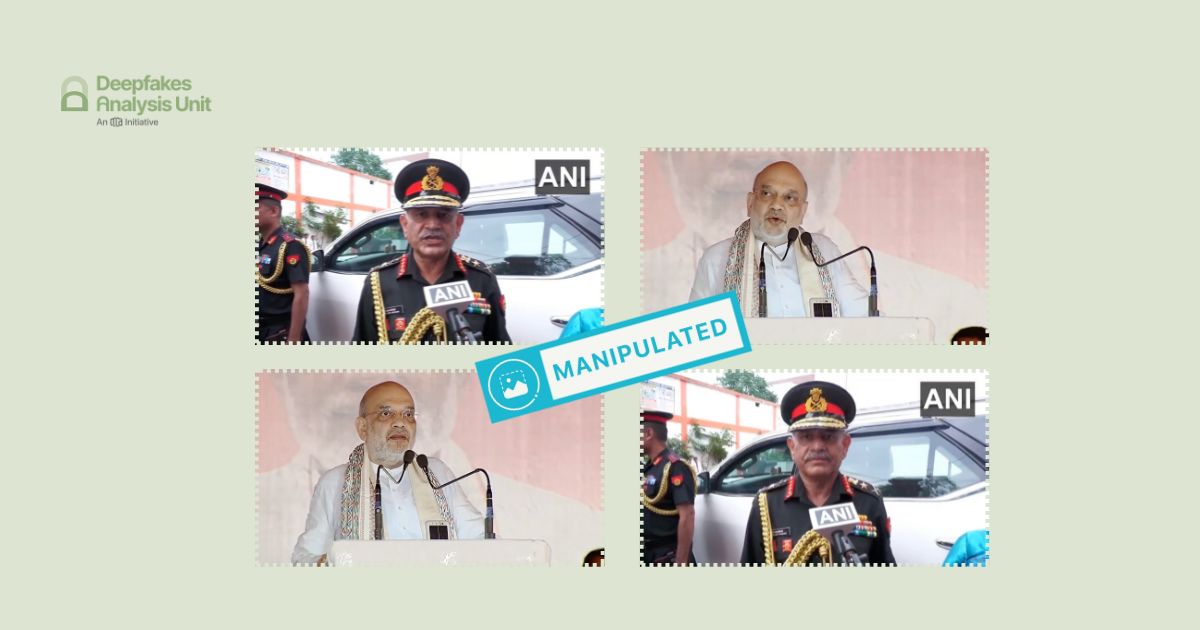The Deepfakes Analysis Unit (DAU) reviewed a video that features Gautam Adani, billionaire businessman, founder and chairperson of the Adani Group, apparently promoting an online gaming platform. After putting the video through A.I. detection tools and getting our expert partners to weigh in, we were able to conclude that the video was doctored using A.I-generated audio.
The 38-second video in Hindi, embedded in a Facebook post, was sent to the DAU by a fact-checking partner for verification. The video purports that Mr. Adani is vouching for the gaming platform to be a sure-fire way of earning money and that he is making a strong case for joining the platform.
A series of graphics flash throughout the video, including varied logos of the supposed platform, and illustrations indicating high returns on investment and bonus payouts. Hindi subtitles for the male voice heard in the clip are visible along the bottom of the video frame. The language used is less conversational, more literary.
For a good part of the video, the lip movements of Adani are out-of-sync with the words that can be heard in the corresponding audio track. The region around his mouth, especially his chin, seems to quiver unnaturally and his lips appear to change shape at various points in the video. Toward the end of the clip when the audio breaks for a few seconds his mouth can still be seen in motion.
His voice sounds very robotic, scripted, without change in pitch or tone. The long pauses characteristic of his style of delivery, seen in recorded interviews, are missing from the video.
After running a reverse image search using screenshots of Adani’s close-up from the video, we were able to locate this video published on March 14, 2024 from the official Youtube channel of ET NOW, a news channel.
On comparing the original video with the one we were analysing, we assessed that Adani’s backdrop, clothing, and mannerism are identical in the two videos. However, he spoke in English in the original video, and his lip movements and address are starkly different in the two videos.
To discern if A.I. had been used to manipulate the visual and audio elements in the video under review, we put it through A.I. detection tools.
Hive AI’s deepfake video detection tool did not detect any manipulation using A.I. in the visuals, but their audio tool indicated tampering using A.I. in the latter half of the audio track.
We also ran the video through TrueMedia’s deepfake detector which suggested substantial evidence of manipulation in the video, overall. In a further breakdown of the analysis, it gave a 100 percent confidence score to “A.I.-generated audio detection” and 78 percent confidence score to “audio analysis”, the latter being a subcategory which indicates that the audio could have been produced using an A.I. audio generator. The audio analysis highlights a strong possibility of the use of A.I. in the audio track.
The tool also gave a 92 percent confidence score to “face manipulation” and a 64 percent confidence score to “generative convolutional vision transformer”, both of which are subcategories that point to the probability that A.I. was used to fabricate the faces featured in the video, in this case it’s Adani’s face.
.png)
.png)
To get an expert analysis on the audio track used in the video, we escalated it to our partner IdentifAI, a San Francisco-based deepfake security startup. They used their audio detection software to check the authenticity of the audio in the clip.
First, they took two real voice samples of Adani’s to generate an audio profile of his. Then they used a heat-map analysis to compare that profile with the audio sample retrieved from the manipulated video after removing background noise.

The image on the left displays a comparison between his real voice and the audio profile of his generated by our partner. The image on the right represents the comparison of the voice sample from the manipulated video with the generated audio profile. The patterns on both images are not identical, indicating that A.I. was used to generate the speech that is being attributed to Adani.
We also sought an expert analysis from our partners at RIT’s DeFake Project to make sense of the oddities that we noticed around Adani’s face in the manipulated video. Saniat Sohrawardi from the project stated that his analysis included reviewing the video with the audio track as well as without it.
Mr. Sohrawardi noted that with the audio intact, the inconsistencies were even more obvious as Adani appears to mumble with a closed mouth, while clear words are heard in the accompanying audio. The video seems to have used wav2lip code repository, a speech-to-lip generation code repository accessible online.

The collage above shows Adani’s teeth melting into his lips, his dentition curving along the shape of the lips, and his lower lip seems swollen in one image.
Sohrawardi added that without the audio file, he was able to identify visual artefacts that made the interior of Adani’s mouth look sharper and the arrangement of his teeth look unrealistically warped.
On the basis of our findings and analysis from experts, we assessed that Adani did not promote any dubious gaming platform, and that his cloned voice was used over original visuals to fabricate a video.
(Written by Debraj Sarkar, and edited by Pamposh Raina.)
Kindly Note: The manipulated audio/video files that we receive on our tipline are not embedded in our assessment reports because we do not intend to contribute to their virality.












